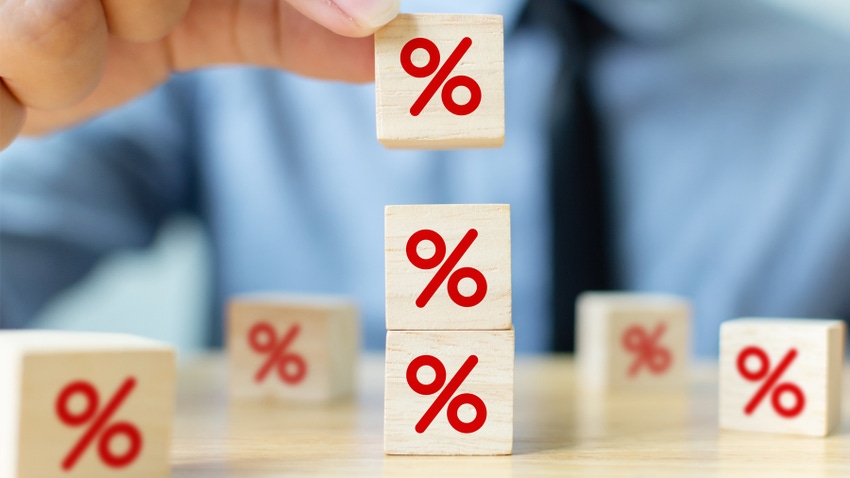August 29, 2023

by Linda Burbridge
The Federal Reserve’s interest rate hikes are a response to higher levels of inflation. Typically, the goal is to have inflation between 1% and 2%. The current level is slightly higher than the Feds want to see but is still lower than the peak observed in June 2022 of about 9%. Increased interest rates put a damper on inflation by reducing the amount of loanable funds demanded by consumers and businesses.
In the last year, the Federal Reserve implemented a series of interest rate hikes to its target for the federal funds rate. The federal funds rate is the interest rate at which commercial banks borrow and lend excess reserves to each other overnight, ensuring compliance with reserve requirements.
While it doesn’t directly impact consumers or businesses, it does make banks reluctant to grant loans and, ultimately, reduces the funds available and puts upward pressure on interest rates for consumer and business loans.
Amid rising interest rates, farmers, ranchers and small businesses are exploring strategies to reduce their interest expenses. One tactic is to reduce the size of operating loans by financing with your working capital. Another option involves minimizing the duration during which your operating line of credit remains above a zero balance. A third, often underappreciated option, is leasing capital equipment rather than purchasing it outright.
One of the primary advantages of leasing is the potential reduction in interest expenses. However, it is crucial to thoroughly assess the total costs and benefits before determining if this approach suits your farm or ranch.
Lease types for capital equipment
Long-term leases on capital equipment generally fall into two categories: an operating lease or a capital lease.
Operating leases. These tend to be more common for real estate in agriculture; however, manufacturers sometimes offer these on machinery and equipment, because they have a comparative advantage in equipment maintenance. Operating leases can also be done over a shorter period; whereas, capital leases are more common for agricultural machinery and equipment.
Capital leases. These are almost always long term, and the lessee is responsible for all the risks and costs associated with the machine but still gains the benefits of ownership.
When capital lease interest is not paid, because no loan is taken, there is still an obligation to make lease payments. This also means the full value of the yearly lease expense is tax-deductible; however, some of the tax savings are offset because depreciation cannot be taken due to the asset technically not being owned.
Another benefit of a capital lease is that because a loan is not required, more of a farm’s financial capital can remain free for other uses.
Make it work
While there is no down payment required for a capital lease, a prepayment is usually stipulated in the agreement so that the first lease payment is made before the start of ownership (and probably prior to the start of harvest). Unlike an operating lease, a capital lease should still be accounted for on the balance sheet, so it can impact your financial ratios.
When is it more beneficial to purchase a capital asset as opposed to leasing it? The answer depends on a few factors. As mentioned, higher interest rates will make capital purchases more expensive compared to a lease. Higher tax rates also make leasing more attractive than purchasing. Another thing to consider would be the amount of the lease payment or the length of the loan if purchasing.
The decision to lease or buy a capital asset is multifaceted. Understanding the factors that influence total payments is important, and a full analysis should be done to evaluate the balance sheet, examine the impact on financial ratios, and determine the net present value of lease payments versus a credit purchase.
For more guidance on capital leases or determining whether a capital purchase or a lease is right for your farm, reach out to your local North Dakota Farm Management instructor. Visit ndfarmmanagement.com, or contact Nikki Fideldy-Doll, state supervisor for agricultural education, at [email protected] or 701-328-3179 for more information.
Burbridge is a Farm Management Education instructor at Dakota College at Bottineau. N.D.
You May Also Like




